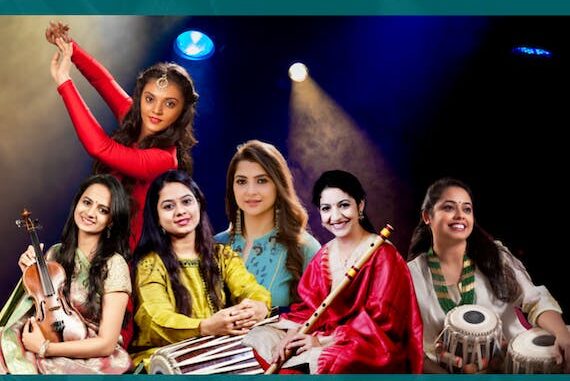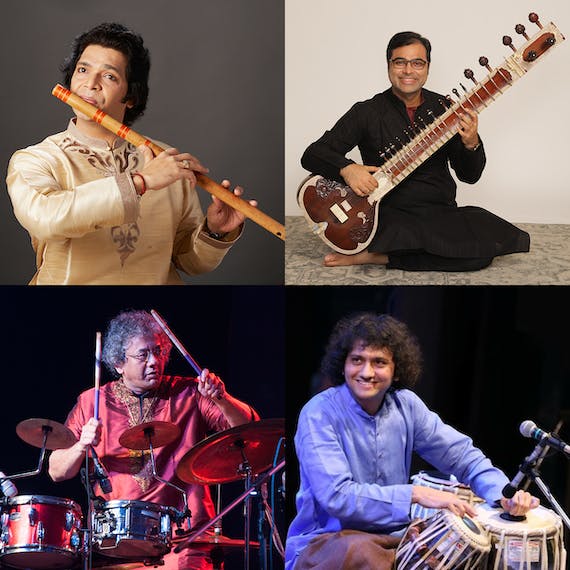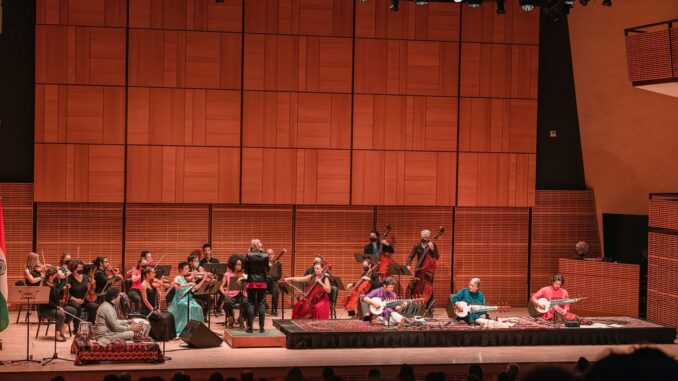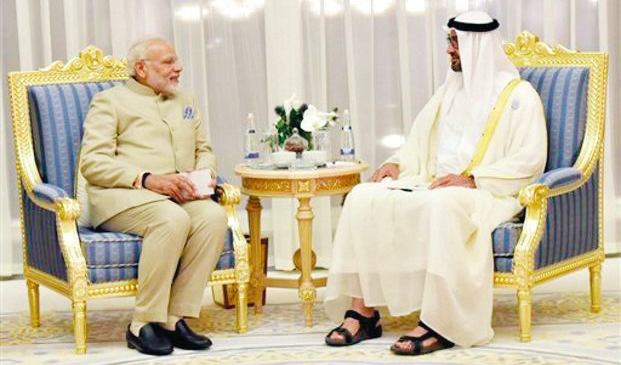By Mabel Pais
On the 75th anniversary of India’s independence from colonial rule, the Indo-American Arts Council (IAAC), a premier cultural organization of the U.S.A. and the Consulate General of India in New York (CGI-NY), had organized a series of programs showcasing India’s cultural diversity, antiquity, and contemporary relevance.
The 10-day specially curated events at some of the iconic cultural venues in New York city began on August 5 with a photo exhibition by celebrated photographer Steve McCurry. This was followed by Dance programs at the Alvin Ailey studios on August 6, 7 & 8, Music programs on Aug 11 & 12 at Jazz at Lincoln Center, and varied Musical performances at Carnegie Hall Aug 13-15 in the run up to celebrating 75 years of India’s independence on August 15 this year. Participants in New York or online (for some events), were able to enjoy the events as part of the Azadi ka Amrit Mahotsav (‘Festival of Freedom’). To learn more, visit iaac.us. Seventy-five years ago, when India became an independent country after centuries of colonial rule, all eyes were on India because of the Gandhian message of Ahimsa, freedom through non-violence, and its ancient message of Vasudhaiva Kutumbakam, treasuring the whole world as one family. Today, in our world of polarization, increasing tribalism, conflict and environmental degradation, the ancient Indian values of respect for diversity, peaceful coexistence, and respect for Nature are needed more urgently than ever.
In the U.S.A., many leaders, from John Adams, Ralph Waldo Emerson, Thoreau, Walt Whitman to Martin Luther King Jr. and Steve Jobs to name a few, have been attracted to Indian ideals and culture. The festival aimed to bring the Indo-American bond closer, with cultural exchanges.
In a video address to members of the Indian-American diaspora at a concert headlined by Sarod maestro Amjad Ali Khan at Carnegie Hall, New York on Monday, August 15, Union Minister of State for External Affairs & Parliamentary Affairs of India, V. Muraleedharan, said India walked hand in hand with the global community in this journey, contributing to international peace and well-being. “When we got freedom, there was tears and joy, but there was also a realization about an immense responsibility lying ahead. We settled down to build our democracy and preserve our unity,” he said. “To many outside, this appeared an insurmountable task, but with dedication and determination, purpose and perseverance, our people nurtured and illuminated our democratic polity,” Muraleedharan said. He said this developed deep roots in India’s social fabric, embracing its diversity, pluralism, and age-old ethos. “Indeed, India’s success has made the world a better place for all freedom-loving people. And for that reason, we are joined by millions across the world to share our joy today,” he said.
He underlined that on the path shown by Mahatma Gandhi, and ever inspired by the motto of ‘Satyameva Jayate’ (truth alone triumphs), “we have built a modern nation – one that prides in its ancient moorings even as it marches on the knowledge and digital pathways of the 21st century.” On the occasion of the 75th anniversary of India’s independence, the Consulate General of India in New York along with the Indo-American Arts Council (IAAC) organized the ‘Azadi ka Amrit Mahotsav – Festival of Freedom’.
Muraleedharan said the occasion of the anniversary of India’s independence is a “sacred day” to pay tribute to the father of the nation Mahatma Gandhi and salute the freedom fighters. He added that as India’s founding fathers soiled and struggled, many nations came forward in support of India’s cause and he expressed gratitude to India’s international partners who joined hands with the country. “Our freedom movement had a special resonance in the United States. We remain grateful to all the women and men of America who stood with us, and these bonds have endured. Our shared democratic fabric continues to bind us together in a warm embrace,” Muraleedharan said.
Consul General Randhir Jaiswal, in his remarks, said that India’s journey of the last 75 years has been “one of pride, fulfillment, honor and unity.” “We have deepened democracy, nurtured inclusive growth and celebrated our diversity and cultural ethos,” he said. He said at the core of India’s freedom is “our people.” “They have shaped our imagination, our democracy and our civilization. And so, we are here to celebrate their resolve, their determination, their courage and their resilience. From scratch, they built a nation of billion dreams and billion achievements,” he said. “We also owe our success to international partners and supporters. And in this rubric, India-US special ties and friendship have left an indelible mark – from ideas and thought, to institutions and partnerships; from Mahatma Gandhi to Martin Luther King, from Tom Paine to Swami Vivekanand; and from Artificial Intelligence to IIT Kanpur,” he said. He said on the path of unity and togetherness, India has lived freedom and practiced democracy. “That is our message to ourselves and to the world – as we look into the future,” he said.
IAAC Chairman Dr. Nirmal Mattoo said the organization is proud and honored to mark the occasion of 75 years of Indian Independence with the remarkable series of events celebrating Indian art and culture. “Curated with care, this line-up boosts an ambitious goal: to truly immerse audiences into a vibrant and diverse culture with limitless potential to inspire all citizens of the world,” he said in a statement issued by the IAAC.
FESTIVAL OF INDIAN MUSIC CELEBRATING 75 YEARS OF INDIAN INDEPENDENCE AZADI KA AMRIT MAHOTSAV
PROGRAM
The Music Festival was celebrated August 13-15, 2022
“As we use flowers in worship, welcoming, honoring, departure, and celebration no matter what our race, origin, religion or language, we similarly arrange musical notes into ‘bouquets’ or compositions that display all our human feelings and emotions,” said the legendary Maestro Amjad Ali Khan.
Carnegie Hall, August 13, 2022

KAUSHIKI CHAKRABORTY’S SAKHI (All Female Ensemble)
Kaushiki Chakraborty, Vocals
Nandini Shankar, Violin
Debopriya Chatterjee Ramdive, Bansuri (Flute)
Bhakti Deshpande, Kathak
Savani Talwalkar, Tabla
Mahima Upadhyay, Pakhawaj
Sakhi consists of all the elements of a musical performance, i.e., vocal, instrumental music from North India (Hindustani) and South India (Carnatic) and dance.
The day’s performance included:
Khayal bandish (lyrics from a female perspective)
Thumri, Dadra, Chaita, Hori, Kajri
Tarana Thillana
Some instrumental presentation where we can use sargams and no lyrics
Bhajan and Folk
Naman – Saraswati
Tarana – The dance of rhythm and melody
Anandini – Mother Goddess
Bageeshwari – The Devi of Knowledge
Samanjasya – Balance
Kanjari – The Divas of the yesteryears
Chaturang – Many shades of Beauty
Lokranjini – The soil, the mother
Rudrani – The fury of the Goddess
To learn about each artist, visit iaac.us
———————————————–
Carnegie Hall, August 14, 2022

SAATH SAATH
Rakesh Chaurasia, Flute
Purbayan Chatterjee, Sitar
Taufiq Qureshi, Djembe
Ojas Adhiya, Tabla
Rakesh Chaurasia – Alaap
Taufiq Qureshi – Breathe Percussion
Purbayan Chatterjee – Jod
All together – Saath Saath
Composition with all four artists
Percussion Duet
Folk tune & Semi Classical piece
To learn about each artist, visit iaac.us
————————————
CONCERT FOR INDIA’S INDEPENDENCE
Carnegie Hall, August 15, 2022
AMJAD ALI KHAN, Sarod
AMAAN ALI BANGASH, Sarod
AYAAN ALI BANGASH, Sarod
LIDIYA YANKOVSKAYA, Conductor
REFUGEE ORCHESTRA PROJECT
The grand finale of the ‘Festival of India@75’ on August 15 featured the Sarod Grand Master and Sarod virtuosos Amaan Ali Bangash, Ayaan Ali Bangash and Tabla players Amit Kavthekar and Ojas Adhiya for ‘Samaagam’, an ensemble that presented the essence of both Indian and Western traditions seamlessly flowing into each other without artistic compromise. “Since my childhood, I always wanted my instrument, the sarod, to be able to express the entire range of human emotions….to Sing, Shout, Whisper and cry. All the emotions! It has been a long journey so far and by the benevolence of the heavens, the sarod has become far more expressive than before,” said maestro Amjad Ali Khan. In Samaagam, 12 different ragas were presented, creating a unique opportunity to experience joyous music and shared traditions.
The spectacular concert, featuring renowned Conductor Lidiya Yankovskaya and the Refugee Orchestra, was held at the Carnegie Hall and presented “a synthesis of musical traditions motivated by Mahatma Gandhi’s principles of truth, non-violence and peace.” Sarod maestro Khan said it was indeed a “great honor” to perform for India’s 75th Year of Independence at Carnegie Hall and congratulated Prime Minister Narendra Modi for “celebrating our historic Independence Day celebration as Azaadi Ka Amrit Mahotsav.” “Musicians and listeners of music have been communicating with each other across all barriers through the language of musical notes from time immemorial. As we use flowers in worship, welcoming, honouring, departure, and celebration no matter what our race, origin, religion or language, we similarly arrange musical notes into ‘bouquets’ or compositions that display all our human feelings and emotions,” the legendary artist said.
SAROD TRIO PROGRAM
Segment 1
AMAAN ALI BANGASH, Sarod
AYAAN AI BANGASH, Sarod
Segment 2
AMJAD ALI KHAN, Sarod
Samaagam – Concerto for 3 Sarods

AMJAD ALI KHAN, AMAAN ALI BANGASH, and
AYAAN ALI BANGASH, Sarod
REFUGEE ORCHESTRA PROJECT
LIDIYA YANKOVSKAYA, Conductor
On the momentous occasion of India’s 75th year of Independence, the night’s concert was a tribute to Mahatma Gandhi and to his message of non-violence. Gandhi insisted that “Each of us must be the change we wish to see in this world.” Resonating with that ethos, the artists tonight musically seek to convey that we should all work together to recreate and be soulfully motivated by his enthralling symphony of Truth, Love, Non-Violence, and Peace.
A wonderful and strange mystery of Indian classical music is the fact that one can spend a lifetime trying to obtain knowledge and perfection and still feel that one has only touched a mere drop of an ocean. The learning never stops along the Journey of searching and discovering. Indian Classical music has indeed had a very spiritual and scientific development and growth. This was a phenomenon that existed from Vedic times. The tradition of classical music dates back to the Sam Veda period. The earliest version of classical music was the Vedic chants. Interestingly, the effect of all the twelve notes on our body, mind and soul are very scientific. Various permutations and combinations give the scales a shape of a raga. However, a raga is much more and beyond. It’s not just a mere scale. A raga has to be invoked, understood, and cared for like a living entity.
The first half of the night’s concert was divided in two segments, The concert started with a duet by Amaan Ali Bangash and Ayaan Ali Bangash (older-younger sons of Amjad Ali Khan), both well-known sarod virtuosos. They presented a traditional raga of Indian Classical music set to various rhythmic time cycles. This was followed by a solo solo by Sarod Grand Master Amjad Ali Khan. Amit Kavthekar and Ojas Adhiya, two brilliant tabla (Indian two-piece drums) players, provided accompaniment for this segment.
An interesting aspect of Indian Classical music is that here you have five people on stage who don’t know what the other is going to do, and yet have to perform like a rehearsed orchestra! Therefore, the role as performers is really that of three people, i.e., the performer, the composer and the conductor. Three in one! Along with the Sarods and the Tablas, there was a drone box tuned to the true tonic.
After intermission, Samaagam – Concerto for 3 Sarods, conducted by Lidiya Yankovskaya, was played by the Refugee Orchestra Project. Samaagam comes from a Sanskrit word meaning ‘confluence or flowing together.’ Amjad Ali Khan aimed to preserve the essence of both Indian and Western traditions so that they can flow into each other without artistic compromise. He uses the orchestration of Indian ensemble music in the pre-Bollywood era as inspiration and has also looked back to the ancient (i.e., pre-equal-temperament) Western tradition incorporating elements which, because of their antiquity, do not violate the rules of Indian music. The aim is through this process to joyfully explore the common musical “DNA”of both traditions. In Samaagam, twelve different ragas were presented. Some will make only a fleeting appearance; others will be explored for longer. To learn about each artist, visit iaac.us
(Mabel Pais writes on The Arts and Entertainment, Social Issues, Health & Wellness, Cuisine and Spirituality)





Be the first to comment